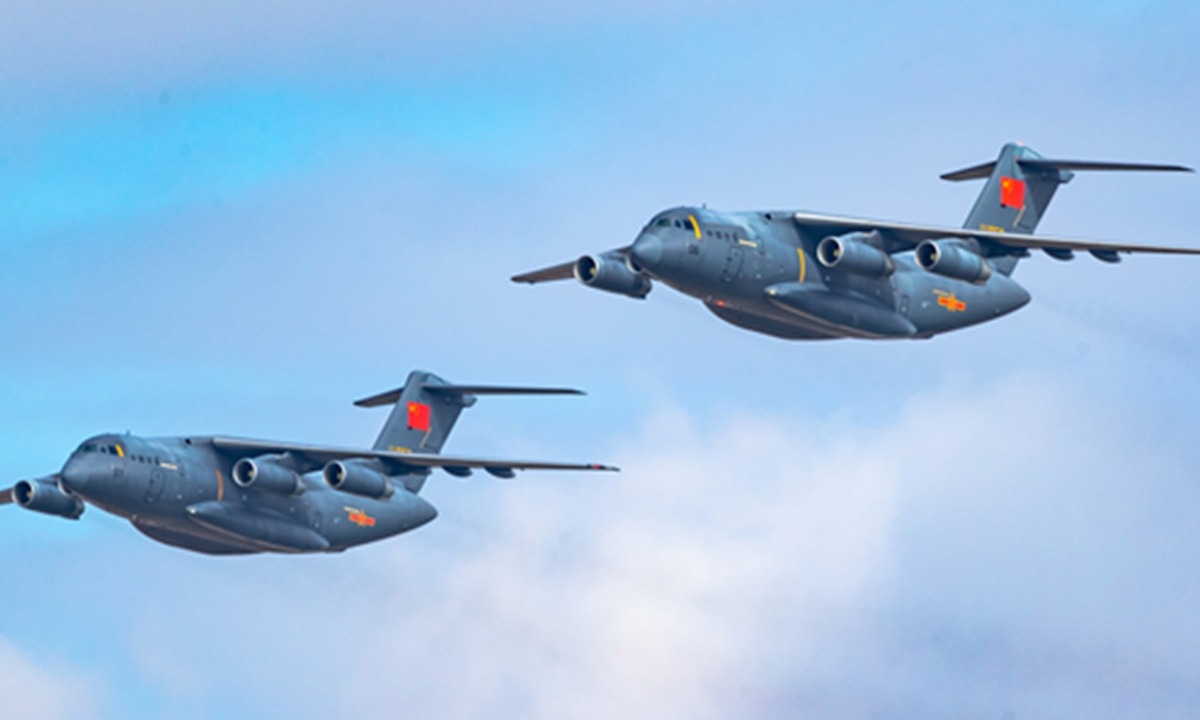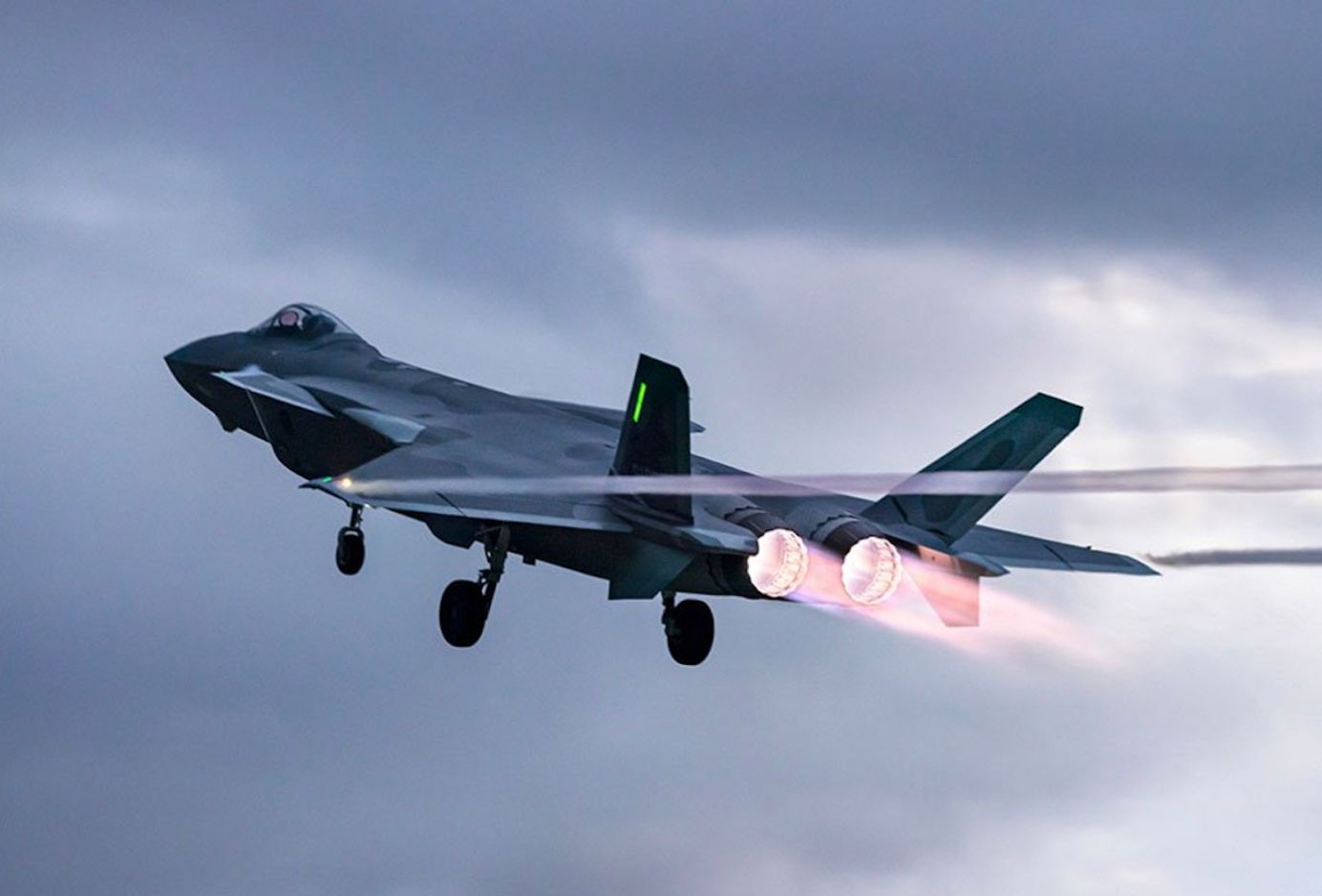OPED By Air Marshal Anil Khosla (R)
China’s defense policies underscore its commitment to self-reliance and the relentless pursuit of advanced technology, aiming to reduce dependence on foreign sources.
The country’s defense industry, a critical component of its national strategy, is one of the largest and most advanced in the world. It is a testament to China’s significant investments in military modernization and technological innovation, which have bolstered its military might and global influence.
The roots of China’s defense industry can be traced back to the 1950s when the People’s Republic of China was established.
Over the decades, it has evolved from focusing on basic weaponry to a more sophisticated and diversified military production capability, with a strong emphasis on advanced technology. The industry is primarily state-owned and heavily regulated by the Chinese government.
Defence Aviation Industry
The military aviation sector is part of China’s broader defense industry and is critical for the People’s Liberation Army Air Force (PLAAF). China’s military aviation industry has rapidly evolved over the past few decades, reflecting its growing emphasis on modernizing its armed forces and enhancing its defense capabilities.
The industry focuses on producing a range of military aircraft, including fighter jets, transport planes, helicopters, and unmanned aerial vehicles (UAVs). The Chinese military has undertaken extensive modernization efforts, including developing advanced fighter jets (Chengdu J-20 and J-31, fifth-generation stealth fighters).
However, China faces several challenges in developing advanced fighter aircraft engines, which are critical for enhancing the capabilities of its military aviation.
Aero Engine Corporation Of China
The Aero Engine Corporation of China (AECC) is a Chinese state-owned enterprise focused on developing, manufacturing, and servicing aircraft engines. It was officially established in August 2016 in response to China’s growing need to develop its indigenous aero-engine technology for military and civilian aircraft.
The company merged parts of AVIC (Aviation Industry Corporation of China) and other related entities to consolidate China’s aerospace engine research, development, and production capabilities.
Developing advanced Indigenous engines is a strategic priority for China, both for the defense sector and the expanding commercial aviation industry (e.g., China’s domestically developed C919 airliner).
AECC aims to reduce China’s reliance on foreign engine manufacturers and to enhance China’s aerospace capabilities, especially in the context of its military modernization and commercial aviation expansion.
Current State Of Development
Historically, China has relied on foreign-sourced engines, and AECC is central to the effort to change that. AECC is focused on developing turbofan and turboprop engines for military jets, such as the WS-10 series (for fighter aircraft) and the WS-15 (for China’s next-generation stealth fighter).
It is also developing high-bypass turbofan engines for commercial aircraft, aiming to rival global engine makers General Electric and Rolls-Royce.
- WS-10 “Taihang” Engine: The 13-14 ton thrust WS-10, a product of several years of dedicated development, represents China’s first successful attempt at producing a modern turbofan engine for its advanced fighters. This achievement, intended for use in the J-10 and J-11 fighter jets, is a testament to China’s progress in engine development. While early versions faced reliability issues, newer variants, such as the WS-10B and WS-10C, have reportedly improved significantly in thrust and performance, instilling optimism about China’s future in aviation technology.
- WS-13 “Tianshan” Engine: A turbofan engine (8.5-9 ton thrust), primarily designed for the FC-1/JF-17 fighter, a joint Chinese-Pakistani light fighter aircraft. The WS-13 is a lighter engine designed for smaller fighters and is an alternative to the Russian-made RD-93 engine used in earlier JF-17 models.
- The WS-15 “Emei” Engine: A next-generation turbofan engine with an estimated 18 tons of thrust is a significant milestone in China’s fighter engine development. Designed to power the J-20 stealth fighter jet, the WS-15 is strategically important as it aims to provide the thrust and performance required for fifth-generation fighter jets, particularly for China’s J-20 stealth fighter. Its potential to achieve super cruise capability (sustained supersonic flight without afterburners) underscores the strategic implications of China’s advancements in fighter engine development. Despite facing delays and challenges in achieving the desired performance standards, the WS-15 represents a promising future for China’s military aviation capabilities (Timelines for the development of this engine are attached).
- WS-18: It is a high-thrust turbofan engine for heavy transport aircraft like the Y-20 and may be used in future bomber or tanker aircraft. The WS-18 is intended to replace foreign engines in China’s large transport aircraft, such as the Y-20, which initially relied on Russian D-30KP engines.
- WS-20 Engine: A high bypass turbofan engine designed for the Y-20 transport aircraft, the WS-20 represents another step in China’s efforts to enhance its engine technology and reduce reliance on imports.

China’s Challenges In Fighter Aircraft Engine Development
The complex process of developing reliable, high-performance aero engines presents a significant challenge for AECC. Multifaceted challenges encompassing technological, material, and geopolitical factors hinder China’s quest to catch up with global leaders in engine technology.
While the country has made notable strides in recent years, overcoming these challenges is crucial for enhancing its military aviation capabilities and achieving greater self-sufficiency in defense technology.
- Technological Challenges: Developing advanced jet engines involves advanced knowledge and complex engineering challenges, including materials science, aerodynamics, and thermodynamics. Achieving high thrust-to-weight ratios, fuel efficiency, and durability while maintaining stealth capabilities requires innovative design solutions, advanced materials, and cutting-edge technology that has taken years to develop.
- Material Limitations: Engine components must withstand extreme temperatures and stresses. Developing high-performance materials that can endure these conditions is crucial. China needs to catch up in producing advanced alloys and composite materials required for next-generation engines. Advanced manufacturing methods, such as precision casting and 3D printing, are essential for creating complex engine parts. While China has progressed in this area, ensuring quality control remains challenging.
- Reliability and Quality: Rigorous testing and quality assurance are vital to ensuring engine reliability. Despite advancements, Chinese engines have struggled with quality and reliability issues compared to their Western counterparts. Early versions of domestically produced engines, like the WS-10, experienced reliability issues that needed to be addressed through ongoing refinements and improvements. There have been concerns about durability and performance under extreme conditions.
- Research and Development Challenges: Building a skilled workforce with expertise in aerospace engineering and related fields is critical. While China has many engineering graduates, there is a need for more specialized training and experience in aerospace propulsion systems. Although the Chinese government has significantly increased investments in aerospace R&D, various sectors still compete for resources. Prioritizing engine development over other military technologies can be a challenge.
- Dependency on Foreign Technology: Historically, China has relied on foreign technology and imports for advanced aircraft engines and critical engine components, especially from Russia. This dependency has limited China’s ability to develop fully indigenous capabilities in this crucial area. For instance, China’s early fighter jets, such as the J-11, used Russian engines (AL-31F), which affected operational independence. While efforts are underway to develop indigenous capabilities, breaking this dependency takes time. Attempts to acquire foreign technology through partnerships and joint ventures have often faced political hurdles, leading to limited access to advanced engine technologies.
- Geopolitical Pressures: Geopolitical tensions, particularly with Western nations, lead to sanctions that limit China’s access to advanced aerospace technologies. This slows down development and innovation in the aviation sector. Competing with established aerospace powerhouses like the United States and Russia, which have decades of experience and technological advancements in engine development, poses another significant challenge.
- Intellectual Property Concerns: Efforts to reverse-engineer foreign engines have raised intellectual property issues, leading to tensions with countries that view these actions as unfair competition.
- Present Status: China has been making significant strides in developing indigenous fighter aircraft engines. The country aims to reduce its reliance on foreign-made engines, mainly from Russia, and to enhance its domestic military aviation capabilities. China’s fighter aircraft engine development has advanced significantly in recent years, reflecting the country’s growing ambitions in military aviation. Chinese engineers have made strides in materials science, advanced manufacturing techniques, and thrust vectoring technology, enhancing engine performance and reliability. China has sought to acquire foreign technology to bolster its capabilities. Collaborations with countries like Russia have facilitated knowledge transfer, especially in engine design and testing.
Future Prospects
China is likely to increase its investment in R&D to improve its engine technology further. The goal is to achieve greater self-sufficiency and enhance the performance of its fighter aircraft.
The exploration of next-generation technologies, including AI-driven engine management systems, adaptive cycle engines, and environmentally sustainable fuels, could shape the future of Chinese military aviation.
Developing advanced fighter aircraft engines is crucial for China’s military modernization efforts. As tensions rise in the Asia-Pacific region, the ability to produce competitive engines will play a vital role in enhancing China’s defense capabilities.

Strategic Implications
China’s struggles with fighter aircraft engine development have strategic implications, particularly in its military modernization efforts and aspirations to become a global aerospace leader.
Achieving self-sufficiency in engine technology is crucial for ensuring operational independence and enhancing the capabilities of its air force. Continued efforts in this area will be essential for China to strengthen its military aviation capabilities and achieve its broader defense objectives.
Timeline Of WS-15 Engine Development.
Estimates vary on when WS-15 development began.
- 1990: Preliminary steps initiated.
- 2005: The blueprint for the WS-15 began to materialize
- 2006: A preliminary image of the WS-15 engine emerged five years before the J-20 prototype was unveiled.
- 2010: The first WS-15 prototypes entered the ground testing phase
- 2012: The full-scale demonstration project was completed, and extensive trials followed.
- 2013: The WS-15 development program started achieving significant milestones.
- July 2018: The Chinese academic overseeing aviation engine R&D in Beijing, Liu Daxiang, announced that WS-15 development was progressing rapidly and would be fully completed within three years.
- 2019: The Russian AL-31 powering the J-20 was replaced by the domestic WS-10C engine.
- 2021: the WS-15 was nearing operational readiness.
- 2022: One WS-15 engine was flown on the jet along with another older version of the engine for testing purposes.
- March 2023: The WS-15 engine achieved full operational capability. WS-15 project Chief Chang Young at the AECC Beijing Institute of Aeronautical Materials announced at the 7th Chinese Aviation Innovation and Entrepreneurship Competition (CAIEC) that the WS-15 engine is now ready for mass production.
- 29th June 2023: Chengdu Aircraft Corporation (CAC) conducted the maiden flight of the new variant J-20 fighter, fitted with two WS-15 turbofan engines.
- As of late August 2024, the Chinese WS-15 engine reportedly encounters several significant hurdles impacting its deployment and operational efficiency. One major issue involves supply chain disruptions related to the advanced alloys needed for the engine’s production.
Conclusion
China’s fighter aircraft engine development is critical to its broader military modernization strategy. While significant progress has been made, ongoing challenges remain.
China’s emphasis on indigenous production, technological innovation, and strategic partnerships will be essential for enhancing its position in the global military aviation landscape. Monitoring these developments as the situation evolves will be crucial for understanding their implications for regional and global security dynamics.
- Air Marshal Anil Khosla PVSM, AVSM, VM, is a former Vice Chief of Air Staff (VCAS) of the Indian Air Force and AOC in C of Eastern Air Command.
- He tweets at: @AnilKhosla16




